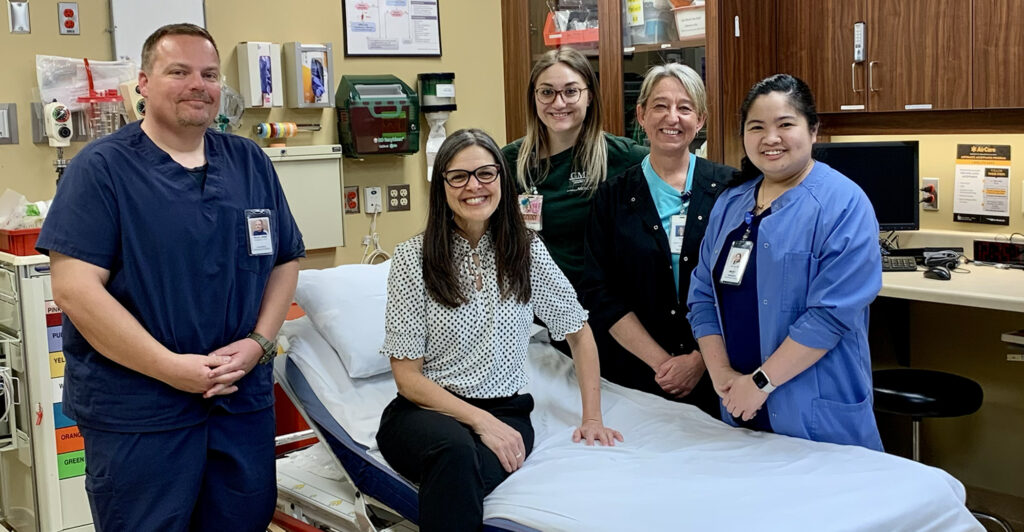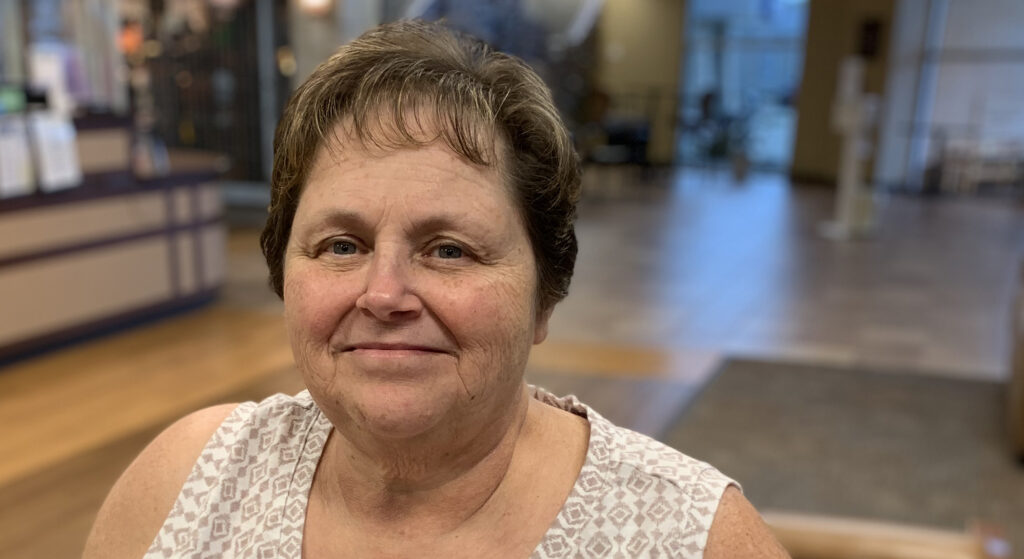
Amy’s Story
In my marketing role at Guttenberg Municipal Hospital & Clinics, I get the privilege of promoting our hospital, our services, our family practice clinics, and our team of caregivers. One of the ways we promote GMHC is by sharing grateful patient stories. I was recently one of those grateful patients!
The last week of February, I was sick at home for several days. With high fever, chills and nausea, I thought I was fighting the stomach flu. And, because my career is not medical, but marketing, I really didn’t know any better!
By day five, feeling worse rather than better, my husband and I made the trip from our home in Cascade to Guttenberg to the GMHC Emergency Department. I was immediately taken into an emergency room where Angie Schmitt, RN, and ED/Hospitalist Bryon Bellinger, ARNP, provided care for me without delay. My IV was started and as Hylari Buensuceso, Medical Lab Scientist, gently drew my blood, I shut my eyes and rested, confident I was in good hands as they worked busily to determine what was ailing me.
After several tests and a CT scan by Samantha Bailey, Radiology Technologist, I was diagnosed with a bilateral kidney infection. Bryon explained the CT scan revealed both of my kidneys were inflamed with infection. When he told me I would be spending the night in the hospital on our Patient Care Unit, I got a little emotional. I didn’t realize just how severely sick I was. He assured me that I would feel much better in the morning after an evening of fluids and additional IV antibiotics. He was right! Thank you, Bryon, for your wisdom, professionalism, and reassurance.
Angie delivered me and my left arm’s new friend, the IV, up to my room to get comfy for the night and shortly after, a nice hot supper arrived. Besides childbirth, this was my first night in the hospital and I was impressed with how clean my room was and how incredibly quiet my stay was. I was well taken care of through the night; my water cup stayed filled and I was helped as needed. I barely remember the 4:30am visit from Altair Labagala, Medical Lab Scientist, to collect more blood.
Around 7am Thursday morning, Angie checked back in on me, giving me one more dose of IV antibiotic, and bringing me a yummy breakfast of a banana, oatmeal and toast, satisfying my recently returned appetite.
By 9am, after a visit with ED/Hospitalist George Osai, ARNP, who confirmed my improved lab results, I was released to go home. Angie walked me through my paperwork, my medication, and made me laugh more than once. Yes, laughter is good medicine! Thank you, Angie, for being my nurse and for the great care you gave me! You made me feel like I was your only patient even though I know I was not.
My husband picked me up and I left GMHC feeling much better, with the sun and a smile on my face! On Friday I received an unexpected, but much appreciated call from health coach Jody Pierce, RN, BSN, from Cornerstone Family Practice. Her warm and friendly demeanor and genuine concern for my health warmed my heart. By Monday, I was well enough to go back to work and looked forward to seeing and thanking my co-workers who took such excellent care of me!
My faith confirms that everything happens for a reason. I know that my patient experience will help me better market the extraordinary gift this hospital is to Guttenberg and its surrounding communities. The experience of walking right into our ED and being cared for immediately…WOW! The behind-the-scenes work in lab and imaging, the clean and comfy room, the hot breakfast, the compassionate care by my kind co-workers, all is greatly appreciated.
There is absolutely no place I would have rather been to receive my care than 45 minutes North at GMHC in Guttenberg!
Thank you, team GMHC, for partnering with me on my health recovery journey. I appreciate you all, the important work you do, and I am honored to work alongside and promote each of you.
Amy Speed



